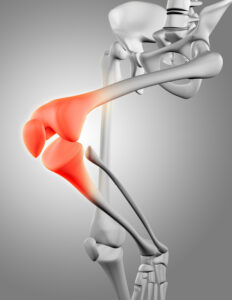Overview
Knee Arthroscopy Surgery is a treatment procedure that does not require the patients to stay overnight in the hospital. Generally, this type of treatment is used to stabilize joints and restore damaged tissue. Thus, the surgery helps the patients experience less pain and faster healing, so most knee surgeries require this type of reconstructive orthopedic surgery.
About Knee Arthroscopy
Knee arthroscopy, a minimally invasive surgical technique commonly performed on an outpatient basis, involves the use of tiny cameras and instruments by your surgeon to gain a clearer perspective of the internal workings of your knee. This approach enhances surgical accuracy and reduces the number and size of incisions required. Additionally, the arthroscope is frequently utilized to aid visualization in more complex surgeries, sometimes necessitating supplementary incisions.
Orthopedic surgeons utilize arthroscopy for the diagnosis and occasionally treatment of knee ailments. The method is especially efficient in treating injuries and ailments that impact or lead to harm in the cartilage, ligaments, tendons, and other nearby soft tissues essential for optimal knee performance.
Knee athroscopy

When Knee Arthroscopy Surgery is Advised
Your physician might suggest knee arthroscopy if you’re experiencing persistent pain that hasn’t improved with non-surgical interventions. Non-surgical approaches typically involve rest, physical therapy, and medications or injections aimed at reducing inflammation.
Arthroscopy could alleviate painful symptoms associated with various issues affecting the cartilage surfaces and adjacent soft tissues of the joint.
One of the main advantages is its ability to minimize pain, scarring, and recovery time due to the smaller incisions compared to traditional surgery.
Common knee arthroscopic procedures comprise:
- Partial meniscectomy, meniscus tear repair, or meniscus transplantation.
- Reconstruction of torn anterior cruciate ligament or posterior cruciate ligament.
- Synovial tissue inflammation removal.
- Trimming or reconstructing damaged articular cartilage.
- Extracting loose bone or cartilage fragments, e.g., synovial chondromatosis-related
- Addressing patella issues.
- Managing knee sepsis.
One can consult Dr. Preetesh and undergo a Knee Arthroscopy.
Advantages/ Disadvantages
What are the advantages of knee arthroscopy?
- It’s a smaller surgery, so you usually recover faster than with big surgeries. You might need only a few stitches, so you can get moving sooner. Plus, you might have less pain and a lower chance of getting an infection.
What are the disadvantages or problems with knee arthroscopy?
- Bad things from the surgery are rare. Like with any surgery, there could be bleeding and infection risks. Afterward, some people might have blood clots, stiffness in the knee, or swelling (but this doesn’t happen often).
Diagnosis:
When X-rays and other tests don’t give clear answers, doctors might use arthroscopy to find out more about what’s going on.
Recovery
Getting better after arthroscopy is usually faster than after open surgery.
Most people go home from the hospital on the same day as the operation with instructions on how to recover.
Some general tips for recovery include:
- Putting ice packs on the bandage and nearby area to reduce swelling and pain\
- Keeping the leg raised for a few days after surgery
- Resting a lot
- Changing the bandage regularly
- Using crutches and following the doctor’s advice on putting weight on the knee
Doctors will give specific instructions before a person leaves the hospital. They might also give painkillers or suggest over-the-counter drugs for managing pain.
Sometimes, doctors might recommend taking aspirin to lower the risk of blood clots.
Recovery times can be different for everyone. Some people might be able to do light activities in 1–3 weeks and most other physical activities in 6–8 weeks.
Exercises
Exercises are important before and after knee arthroscopy. They can help strengthen the muscles around the knee and help it heal fully.
A physical therapist might show exercises to do, and doctors might teach some simple stretches and exercises for home.
Exercises are really important for getting the knee strong and moving well again.
The type of exercises will depend on how bad the problem is and how the person is doing overall. It’s important to talk to a doctor or physical therapist before trying exercises at home.
